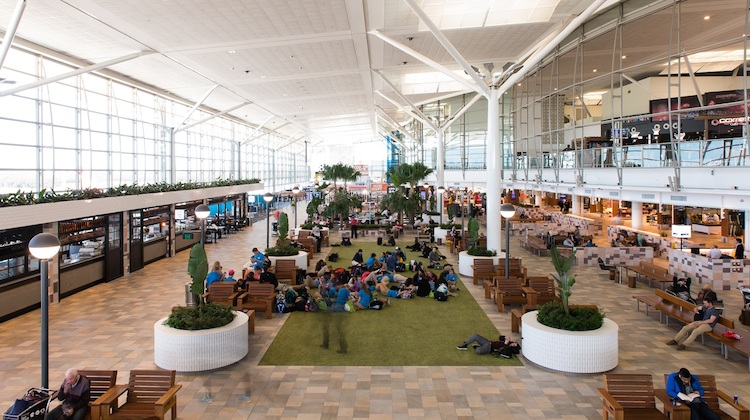
New international flights have helped Brisbane Airport post an improvement in passenger numbers during calendar 2016.
Brisbane Airport handled 22.69 million travellers in the 12 months to December 31 2016, up 2.4 per cent from the prior corresponding period.
International passengers were up 4.9 per cent to 5.43 million, while the number of domestic travellers rose by a more sedate 1.4 per cent 17.26 million, Brisbane Airport said in a statement on Friday.
On the international front, during calendar 2016 Air Canada began nonstop flights to Vancouver, China Eastern commenced service from Shanghai and Qantas started operating to Port Moresby. There were also capacity increases from the likes of Etihad Airways, EVA Air and Singapore Airlines.
In terms of domestic highlights, Brisbane Airport welcomed new flights from regional carriers Jetgo and Fly Corporate.
“Capacity to/from intrastate ports continued to fall as airlines responded to mining industry fluctuation which led to demand from the FIFO (fly-in fly-out) segment declining,” Brisbane Airport said.
Brisbane Airport chief executive Julieanne Alroe said having more international services supported the state’s tourism economy and regional airline operators, given the number of overseas visitors who travelled other parts of Queensland from Brisbane.
“Tourism Research Australia statistics show that international passengers who arrive in Australia through Brisbane Airport stay far longer in Queensland than if they came in through any other airport in Australia,” Alroe said in a statement.
“We are absolutely committed to working with our regional counterparts to get the best connectivity for Queensland and share the benefits of the hard work being done to build Brisbane as the gateway to Australia.”
In terms of improvements at the airport, Alroe said work on the new runway would occur later in 2017.
“The jewel in our crown, Brisbane’s new runway, is also entering its next exciting construction phase, so travellers can expect to see works commencing on site there, as well as new and improved facilities across the airport,” Alroe said.
Meanwhile, Melbourne Airport reported a bumper month for international travellers in December, with the number of overseas travellers up 10.2 per cent to 952,855 compared with the prior corresponding period. Domestic passenger numbers at Tullamarine rose 2.1 per cent to 2.19 million.
Overall, Melbourne Airport posted a 4.5 per cent increase in total passengers to 3.14 million in December, which was Tullamarine’s busiest month for passenger travel in calendar 2016.
Melbourne Airport chief executive Lyell Strambi said planned terminal upgrades and improvements were designed to enable Tullamarine to cope with the expected further growth in passenger numbers in the years ahead.
“The challenge for Melbourne Airport in 2017 is to ensure we enhance our capacity to accommodate even further growth, with forecast passenger volumes that are unprecedented in the history of this vitally important asset,” Strambi said in a statement.
“Over the next 12 months we will begin extensive work to add an additional baggage reclaim in our international arrivals. This will deliver a much smoother arrivals experience for inbound passengers, particularly during peak periods.
“It is a testament to the long-term vision of the airport’s designers that we have been able to grow so dramatically over the past decade.”













